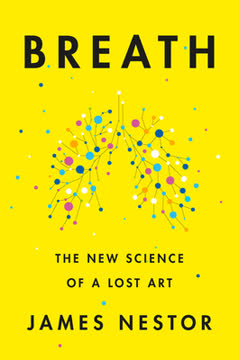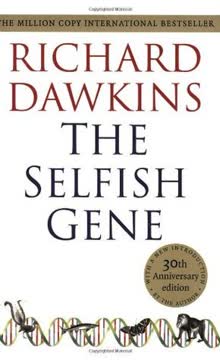Key Takeaways
1. Your brain contains multiple body maps that shape your perception and actions
"Your brain contains cells that keep track of everything and anything that happens within the invisible space at arm's length around your body."
Body maps are neural representations of your physical self and the space around you. These maps include:
- Primary touch map (somatosensory cortex)
- Primary motor map (motor cortex)
- Peripersonal space map (parietal and premotor cortex)
- Visceral map (insula)
These interconnected maps form your body schema, which allows you to:
- Sense your body's position and movements
- Interact with objects in your environment
- Plan and execute actions
- Maintain balance and coordination
Understanding these maps provides insight into how we perceive and interact with the world, and how disorders like phantom limbs or out-of-body experiences can occur.
2. Body maps are flexible and can incorporate tools and technology
"Your body schema is a physiological construct. Your brain creates it from the interaction of touch, vision, proprioception, balance, and hearing. It even extends it out into the space around your body."
The plasticity of body maps allows us to incorporate tools and technology into our body schema. This flexibility enables:
- Using tools as extensions of our body (e.g., a blind person's cane)
- Adapting to prosthetic limbs
- Controlling avatars in virtual reality
Experiments have shown that:
- Monkeys can learn to use rakes, expanding their peripersonal space maps
- Humans quickly adapt to using virtual limbs or controlling robotic arms
This plasticity has implications for:
- Rehabilitation after injury or amputation
- Developing more intuitive human-machine interfaces
- Understanding how technology shapes our perception of self and environment
3. Mirror neurons allow us to understand and empathize with others
"Mirror neurons will do for psychology what DNA did for biology: They will provide a unifying framework and help explain a host of mental abilities that have hitherto remained mysterious and inaccessible to experiments."
Mirror neurons are specialized brain cells that activate both when we perform an action and when we observe someone else performing that action. They play a crucial role in:
- Understanding others' intentions and emotions
- Empathy and social cognition
- Language acquisition and communication
Mirror neurons contribute to:
- Learning through imitation
- Emotional contagion (e.g., why yawning is contagious)
- The development of theory of mind
Research suggests that mirror neuron dysfunction may be involved in:
- Autism spectrum disorders
- Difficulties with empathy or social interaction
Understanding mirror neurons provides insights into human social behavior, learning, and emotional intelligence.
4. The right frontal insula integrates bodily sensations with emotions
"The right frontal insula is where conscious physical sensation and conscious emotional awareness coemerge."
The right frontal insula is a critical brain region that:
- Integrates bodily sensations with emotional experiences
- Contributes to self-awareness and emotional intelligence
- Plays a role in empathy and social emotions
Key functions of the right frontal insula include:
- Processing interoceptive signals (internal bodily sensations)
- Generating emotional awareness
- Contributing to decision-making and risk assessment
Research has shown that:
- People with greater empathy have more gray matter in their right frontal insula
- Damage to this region can impair emotional recognition and social cognition
Understanding the role of the right frontal insula provides insights into the mind-body connection and the neural basis of emotions.
5. Neuroplasticity enables the brain to adapt and learn throughout life
"Neuroplasticity continually reshapes your brain in response to experience; the fact that it seems static merely reflects the consistency of your experiences throughout most of your adult life."
Neuroplasticity is the brain's ability to reorganize itself by forming new neural connections. This process:
- Occurs throughout life, not just during childhood
- Allows for learning and adaptation to new experiences
- Can help recover function after brain injury
Key aspects of neuroplasticity:
- Synaptic plasticity: Strengthening or weakening of connections between neurons
- Structural plasticity: Formation of new neurons or changes in brain structure
Examples of neuroplasticity in action:
- Learning a new skill (e.g., playing an instrument) changes brain structure
- Rehabilitation after stroke can lead to remapping of brain functions
- Meditation and mindfulness practices can alter brain structure and function
Understanding neuroplasticity has implications for education, rehabilitation, and personal growth.
6. Phantom limbs and out-of-body experiences reveal the malleability of body maps
"A phantom is born as plasticity reorganizes touch maps and motor maps in the Penfield homunculi."
Phantom limbs and out-of-body experiences demonstrate the flexibility of our body maps and how they can become distorted. These phenomena:
- Occur when there's a mismatch between physical reality and neural representations
- Provide insights into how the brain constructs our sense of self and body
Key points:
- Phantom limbs: Sensations of a missing limb due to reorganization of body maps
- Out-of-body experiences: Feeling of being outside one's physical body
Research has shown:
- Mirror therapy can alleviate phantom limb pain
- Electrical stimulation of certain brain regions can induce out-of-body experiences
Understanding these phenomena helps in:
- Developing treatments for phantom limb pain
- Exploring the neural basis of self-awareness and embodiment
7. Culture and early experiences significantly influence body mapping
"Culture deeply modulates perception."
Cultural influences and early experiences shape how our brains map our bodies and interpret sensory information. This affects:
- How we perceive personal space
- Our emotional responses to touch and other sensations
- Our understanding of our own bodies and those of others
Examples of cultural influences on body mapping:
- Differences in personal space preferences across cultures
- Varied emphasis on different senses (e.g., some cultures prioritize balance over vision)
- Cultural practices that shape body awareness (e.g., meditation, martial arts)
Early experiences that impact body mapping:
- Physical touch and affection in infancy
- Exposure to different sensory environments
- Learning cultural norms about body language and personal space
Understanding these influences helps explain cultural differences in perception and behavior, and informs approaches to child development and cross-cultural communication.
8. Virtual reality and cybertechnology are expanding our body schemas
"The future application of virtual reality, and the real art of it, will be to change your sensorimotor loops, to change the nature of your own body perception through the avatar."
Virtual reality (VR) and cybertechnology are pushing the boundaries of our body schemas, allowing us to:
- Experience and control virtual bodies (avatars)
- Extend our sense of peripersonal space into digital environments
- Explore new forms of embodiment and sensory experiences
Key developments:
- VR systems that track and replicate body movements
- Haptic feedback devices that simulate touch in virtual environments
- Brain-computer interfaces for direct control of digital or robotic systems
Potential applications:
- Enhanced learning and training (e.g., surgical simulations)
- Therapy for body image disorders or phobias
- New forms of artistic expression and entertainment
These technologies raise questions about:
- The nature of embodiment and identity in digital spaces
- Ethical considerations of altering body perception
- Long-term effects of extended use on our physical and mental well-being
9. Interoception provides the foundation for emotional intelligence
"Interoception is the font of your complex emotionality. It breathes life into your cortex, which is otherwise rather machinelike in character."
Interoception, the sense of your body's internal state, plays a crucial role in emotional intelligence and self-awareness. It:
- Forms the basis for our felt sense of emotions
- Contributes to decision-making and social cognition
- Influences our overall sense of well-being
Key aspects of interoception:
- Sensing internal bodily states (e.g., heartbeat, hunger, pain)
- Integration of these signals in the insula and other brain regions
- Contribution to emotional awareness and regulation
Research has shown that:
- Better interoceptive awareness correlates with higher emotional intelligence
- Practices like mindfulness meditation can enhance interoceptive awareness
Understanding interoception has implications for:
- Mental health treatment (e.g., anxiety, depression)
- Enhancing emotional intelligence and decision-making skills
- Developing interventions to improve body awareness and emotional regulation
10. Pain is a complex homeostatic emotion, not just a physical sensation
"Pain is an opinion on the state of your body."
Pain is a multifaceted experience that involves:
- Sensory input from the body
- Emotional and cognitive processing in the brain
- Cultural and personal beliefs about pain
Key aspects of pain:
- Nociception: Detection of potentially harmful stimuli
- Pain perception: Subjective experience of pain
- Pain modulation: Brain processes that can increase or decrease pain
Factors influencing pain experience:
- Emotional state and stress levels
- Cultural beliefs and past experiences
- Attention and cognitive processes
Understanding pain as a complex homeostatic emotion has implications for:
- Developing more effective pain management strategies
- Explaining phenomena like placebo effects and pain without apparent physical cause
- Integrating mind-body approaches in pain treatment
This perspective challenges traditional views of pain and suggests more holistic approaches to pain management and treatment.
Last updated:
Review Summary
The Body Has a Mind of Its Own receives mostly positive reviews, with readers praising its fascinating exploration of neuroscience and body-brain connections. Many find it accessible and engaging, highlighting topics like body maps, mirror neurons, and the impact of brain damage on perception. Some reviewers note its relevance to fields like dance, movement science, and trauma recovery. A few criticize the lack of proper citations or find certain sections technical. Overall, readers appreciate the book's insights into how the brain interprets and interacts with the body and environment.
Similar Books










Download PDF
Download EPUB
.epub digital book format is ideal for reading ebooks on phones, tablets, and e-readers.




